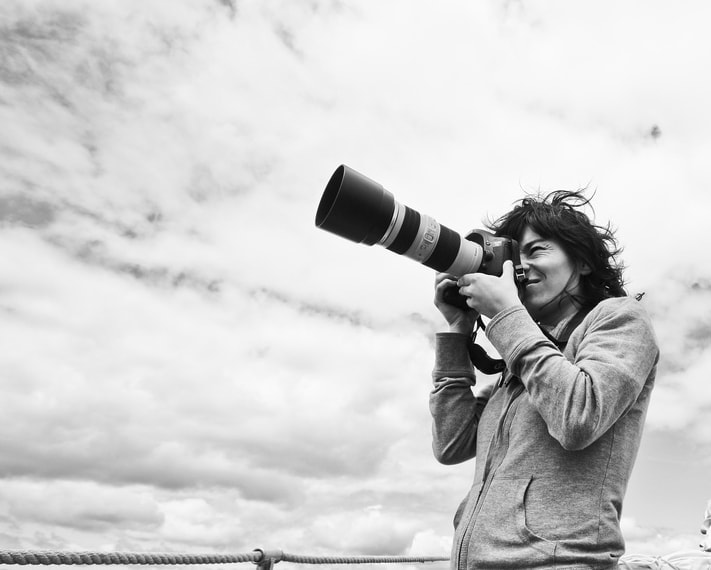Within the Photographer's Blog you will find several articles that will help you understand what it is and how to get the most out of the focal length of your lenses, but little has been said about how to use them in a more artistic way and not so much from its technical aspects.
The objective that you use when taking your photographs will have a significant impact not only on the perspective but also on the messages and sensations that are transmitted to the viewer. Why get closer to the subject if with my telephoto lens I can photograph it from afar? Why use a wide angle if you don't want to shoot landscapes?
In today's article we will answer these questions and some more so that you can use the focal length of the objectives as one more element when composing your photographs. But if you want to know more about objectives, types, terminology, acronyms, focal lengths and others, do not miss the mega guide that we have prepared for you.
WHAT IS FOCAL LENGTH?
Before starting to talk about how to use the focal length when composing your photographs, we must first define what the focal length is, but since today's article will try to avoid all the technicalities with which this topic is generally treated , I recommend that, so that you can give yourself a complete idea of what the focal length is, you read the following articles:
- Focal lengths for what?
- Ideal Focal Distance According to Types of Photography
- Focal Length of Objectives and Lenses
Clarification: you should not confuse focal length with focus distance: while the first refers to the "reach" of your objective, the second refers to the path where your objective is able to focus, that is, to obtain sharpness, and in where it won't. The focus distance will depend on the focal length of your lens.
AND THE PERSPECTIVE?
In photography, the ability to recreate the depth and relative position of each of the elements of a certain scene in a photo is called perspective.
Perspective simulates depth. It is a visual illusion that the observer perceives that allows him, when observing a photograph, to determine the distances that separate the different objects and subjects in them, that is, it allows the observer to perceive the depth of the elements in it.
Keep in mind that a photograph tries to recreate a three-dimensional scene (height, width and depth) in a two-dimensional image (height and width). Effectively capturing the remaining dimension is impossible for photography since it lacks a third plane, but it is possible to convey the sensation of depth, working with the different elements of the scene.
This is where the focal length that you are going to use to take a certain shot becomes fundamental: depending on the focal length that you use, you will be able to transmit the depth of a scene to a greater or lesser extent. Conveying a sense of depth is much easier using a wide-angle lens, which, thanks to its angle of view, allows you to capture "much more of the scene" than if you use a telephoto lens where the angle of view is so small that all planes (depths) seem to clump together.
The focal length that you are going to use when taking your photos, can not only change the perspective but can also modify the entire meaning of it. That is why it is extremely important that you do not stop paying the attention this parameter deserves, since it will affect not only the visual quality of your photos, but also the messages and sensations they convey.
Once you have defined the focal length and the perspective that you will use to take your next photographs, you will have already defined 2 of the 4 parameters that you must take into account before taking a shot. The remaining two are: depth of field and framing.
DEPTH OF FIELD
As Mario explained in "The Depth of Field: Explanatory Graph" , it is the area of the image that is sharp or well focused, in contrast to other areas of less focus.
To achieve greater depth of field (more sharpness) you should use small diaphragm apertures (f/16, f/22, etc.) and conversely, if you want a shallow depth of field (greater blur) you should use larger diaphragms. open (f/1.8, f/2.8, etc.).
I recommend that you take a look at the following article so that you can master everything related to depth of field, sharpness and blur: “24 Ways to Get Sharp Photos in your Photographs” .
THE FRAMING
Despite the fact that it seems that the framing is the last adjustment that you will make before pressing the shutter button and taking the picture, since surely you frame once a correct measurement and exposure have been made and after adjusting each and every one of the parameters of the shot It's actually the first.
Why am I saying this? Because when you prepare to take a shot, even if you don't realize it, the final photograph is already spinning in your head. You already know what you want to obtain, you just need to adjust all the necessary parameters so that you can capture the photo that your eyes have taken, in a photo that your camera can take.
When it comes time to frame the photograph, you must be very clear about what would happen with it if you used a short focal length, that is, more angular or a less angular long one. So that you can get an idea of the differences between using a wide angle lens and a telephoto lens, here is a diagram, where Mario enjoys a day at the beach, while he is photographed using different focal lengths:
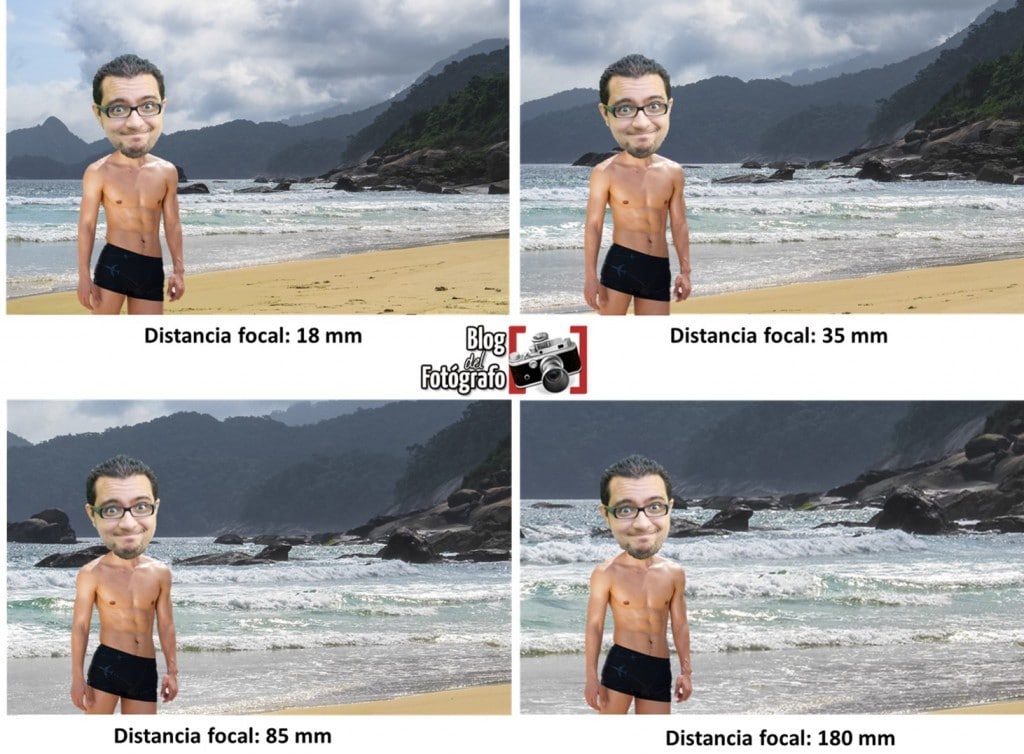
Surely you have noticed that as the focal length increases and Mario maintains the same proportion in the frame (this is achieved by moving further away from the subject as the focal length increases), the background gets closer to the subject, that is, it becomes closer to the subject. They put the plans together, losing perspective. In the first scheme, when using an angular lens, the sensation of space can be appreciated much better (greater perspective) than in the last one, where the distance between Mario and the background seems almost zero.
compose framing
One of the basic rules of composition in photography is: fill the frame. This "rule", as explained by Caro in the article "9 Tips and Tricks to Improve Your Photographic Composition" , invites you to occupy the greatest amount of space in the frame with your protagonist, eliminating everything that could disturb or distract attention. of the viewer when browsing through your photographs. It may seem like a fairly obvious rule from the theoretical, although in practice it is not always so easy to be able to do it.
The framing refers to how you will arrange the elements within your photography, whether they are subjects, objects or the space itself that you want to use as protagonists or as secondary elements, in order to give character and strength to it. As I told you in the article “16 Ways to Give Your Subjects Prominence” , you must be able to direct attention in each of your photographs to those elements with which you want to tell your stories clearly and concisely.
Make sure that your protagonist is the center of attention in your photographs.
FOCAL LENGTH AS A COMPOSITIONAL ELEMENT
Now that you know what focal length, perspective, depth of field are and how they are related when composing and framing your photographs, let's see how you can use these factors as one more element when composing your photographs. .
Short Focal Lengths - Wide
Contrary to what seems to be a rule in the world of photography, the usefulness of an angular or wide angle lens is not to "put a lot of the scene" in a single photograph, but rather, by capturing a larger portion Thanks to its angle of vision, it allows you to work on perspective in a better way, that is, the sensation of depth.
Contrary to what many believe, this is its main feature: allowing a greater sense of depth to be conveyed.
Wide lenses were not designed purely and exclusively for landscape photography. There are countless situations in which perspective is the protagonist, and the best way to portray it is with an angular lens.
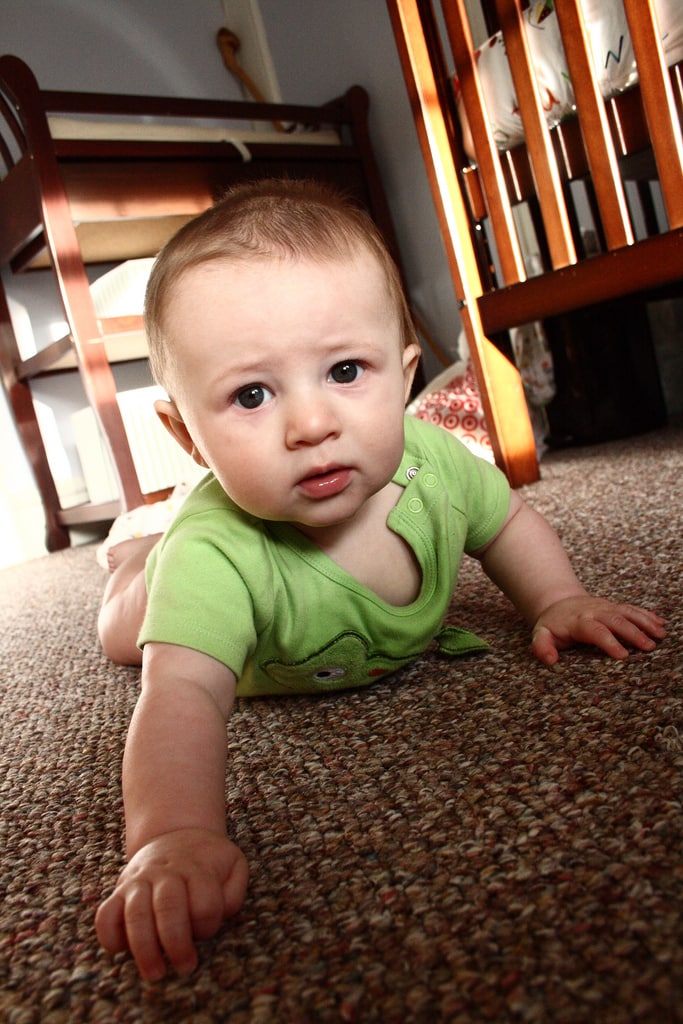
In the previous photograph, if it had been taken with a normal lens or worse, with a telephoto lens, the sensation of depth, the distance between the different elements, would have been lost, making a great photograph, a simple photo.
By using a short focal length and at the same time, filling the frame with your subject, you will be able to not only highlight your subject, but also situate it and give it context.
Do not forget that, more important than what the photographs show is what they transmit.
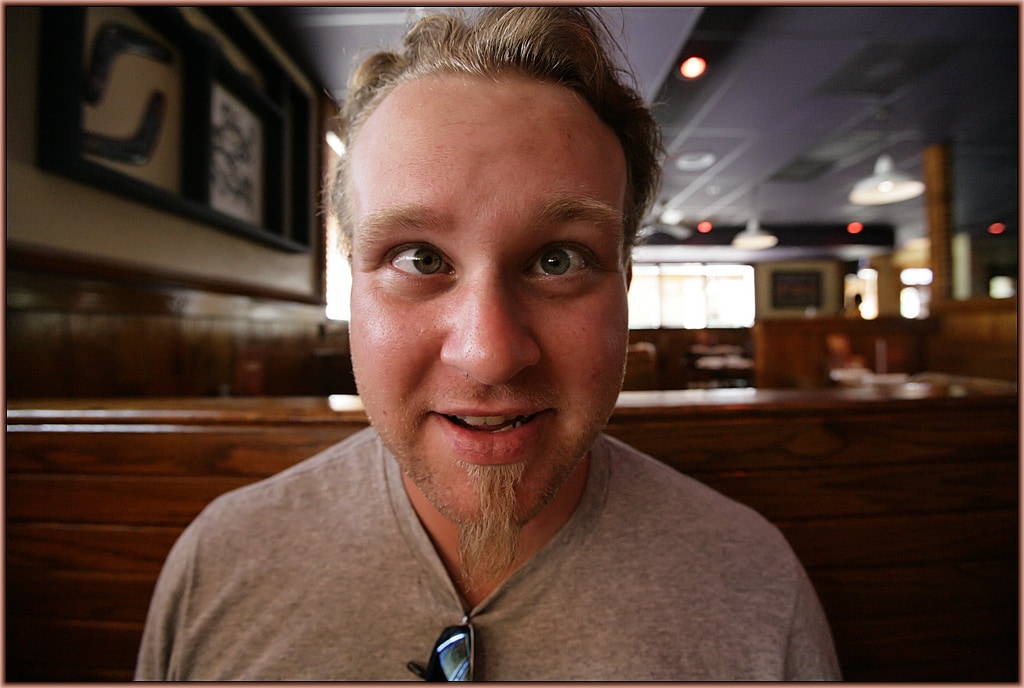
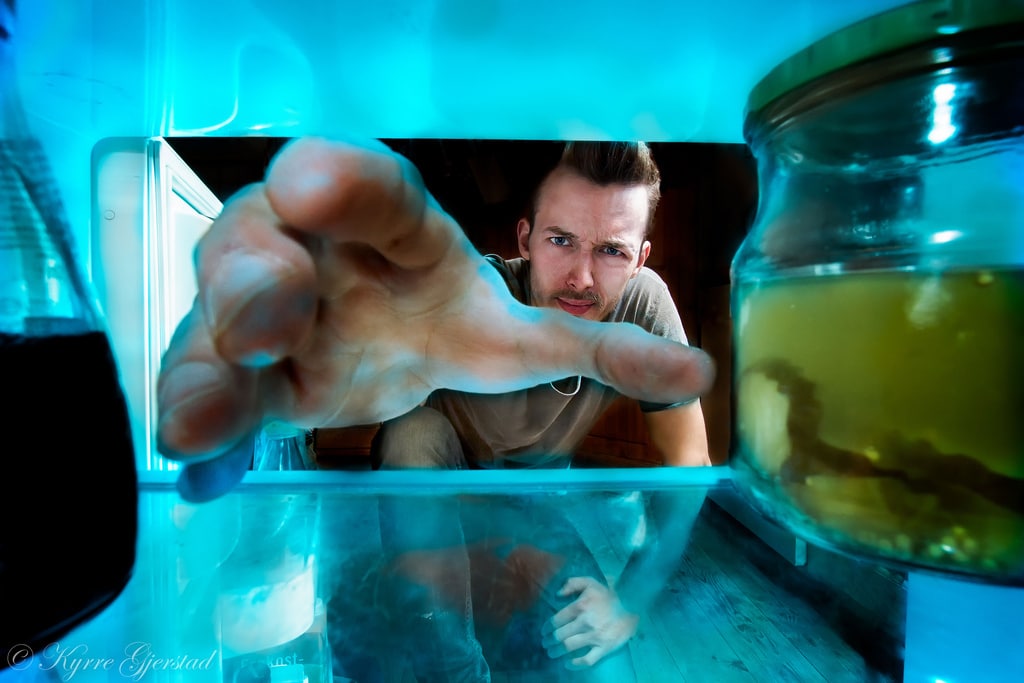
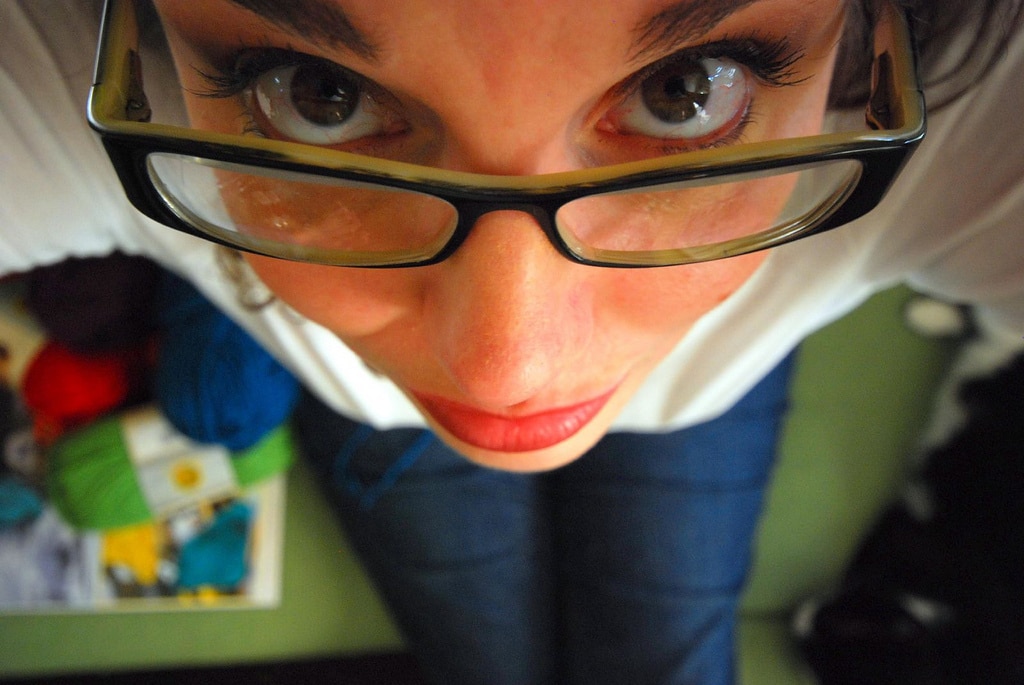
Long Focal Lengths: Telephoto Lenses
Contrary to what happens with short focal lengths, if you use a long focal length, that is, a telephoto lens or a “zoom”, that sensation of spatiality or perspective will disappear.
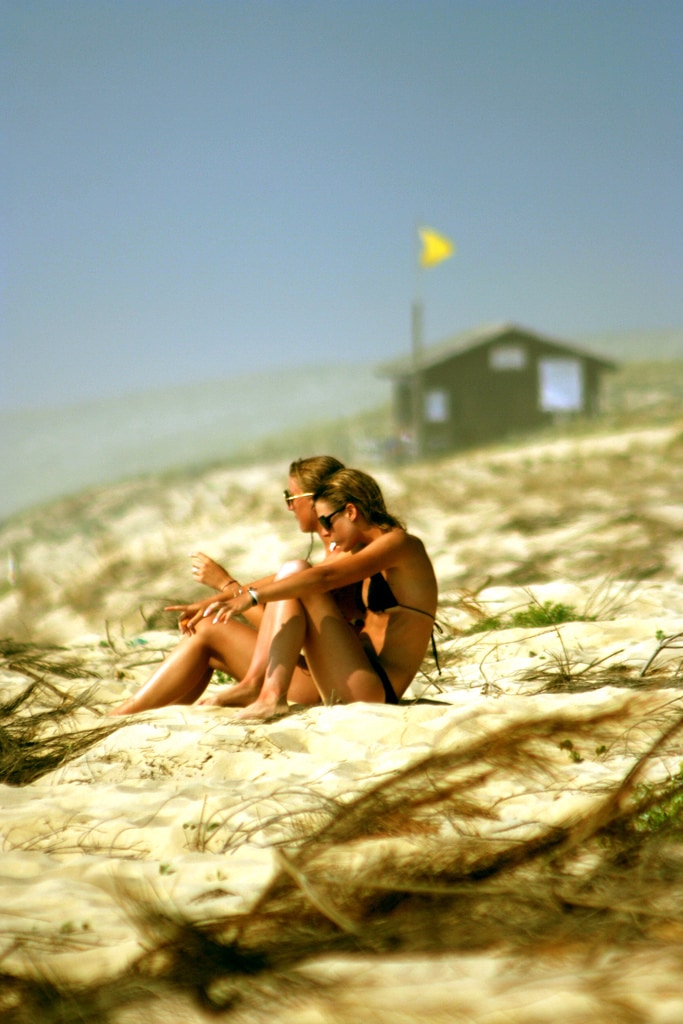
By using long focal lengths, all the planes of a photograph will be compressed, you will lose perspective but, at the same time, it will be much easier for you to isolate your protagonist. Why? Lenses with long focal lengths (telephoto lenses) when focusing on the subject or object, tend to blur the rest of the planes of the photograph as a result of the shallow depth of field compared to an angular lens.
Pay attention: notice how in the following photographs, the sensation of depth seems to disappear but it is much faster and easier to find the protagonist. The gaze is always directed towards the subjects or objects in focus.
Although it is important to know how the lenses you use work, what they were designed for and in what situations you will get the best results, the most important thing is and always will be the pictures you take with them. The camera and lenses are just a means for you to express yourself.
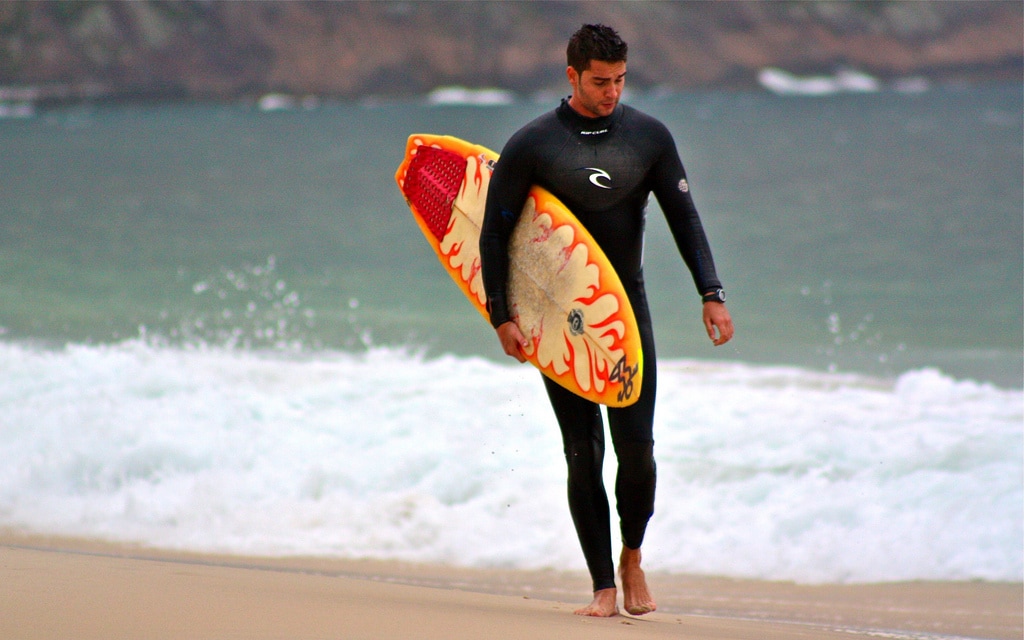
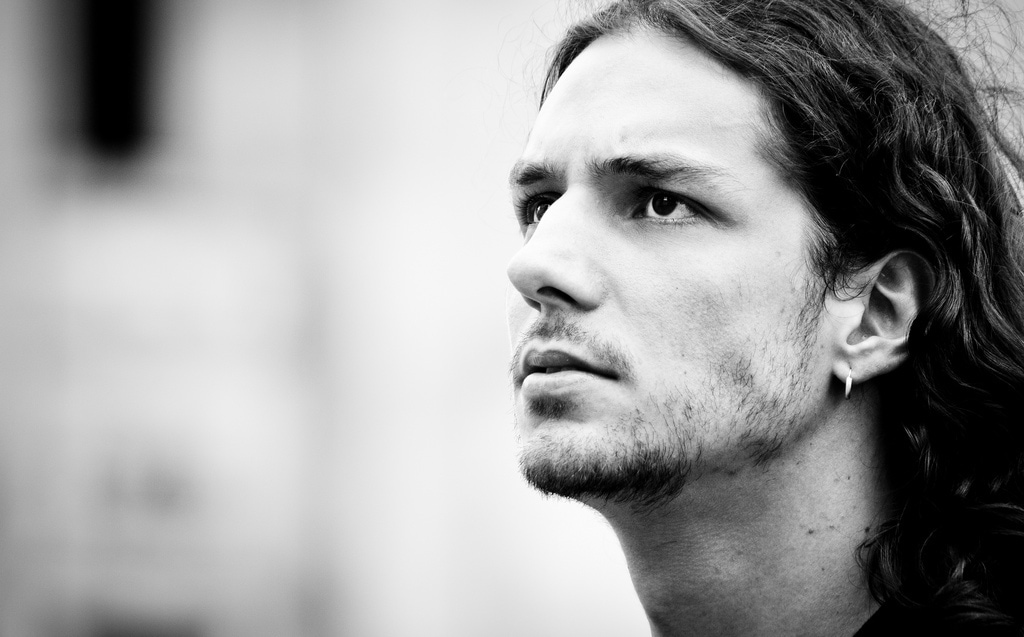
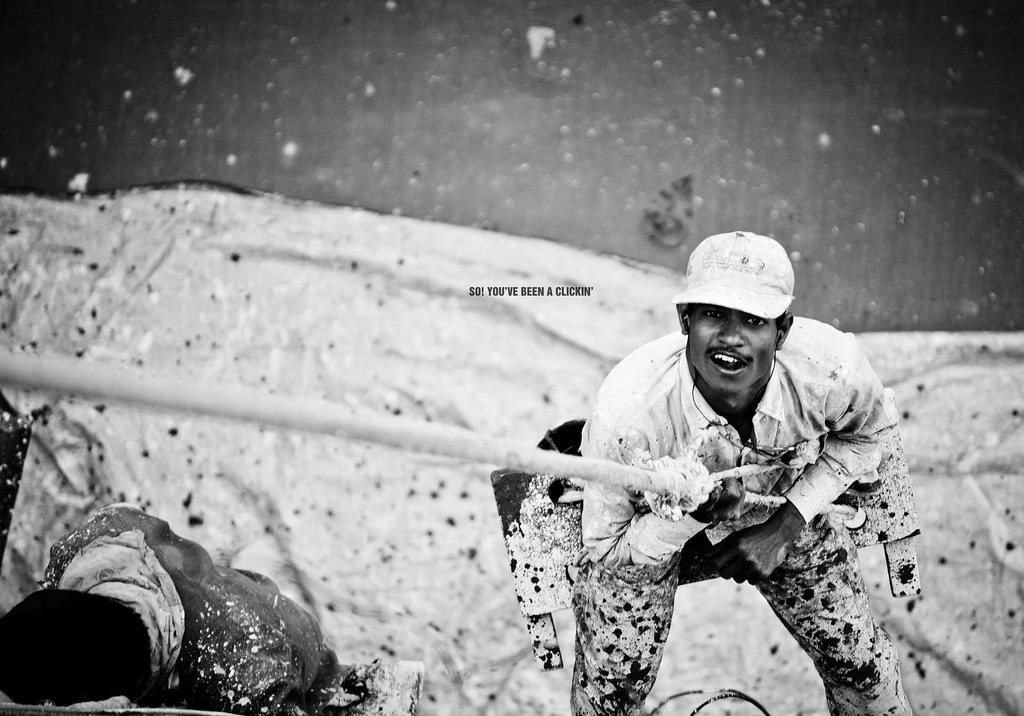
Knowing how it works and how the different focal lengths can help you enhance your messages will be essential if you want to stop taking good photos and start taking excellent ones.
The key? Take, take and take photos. What are you waiting for?

